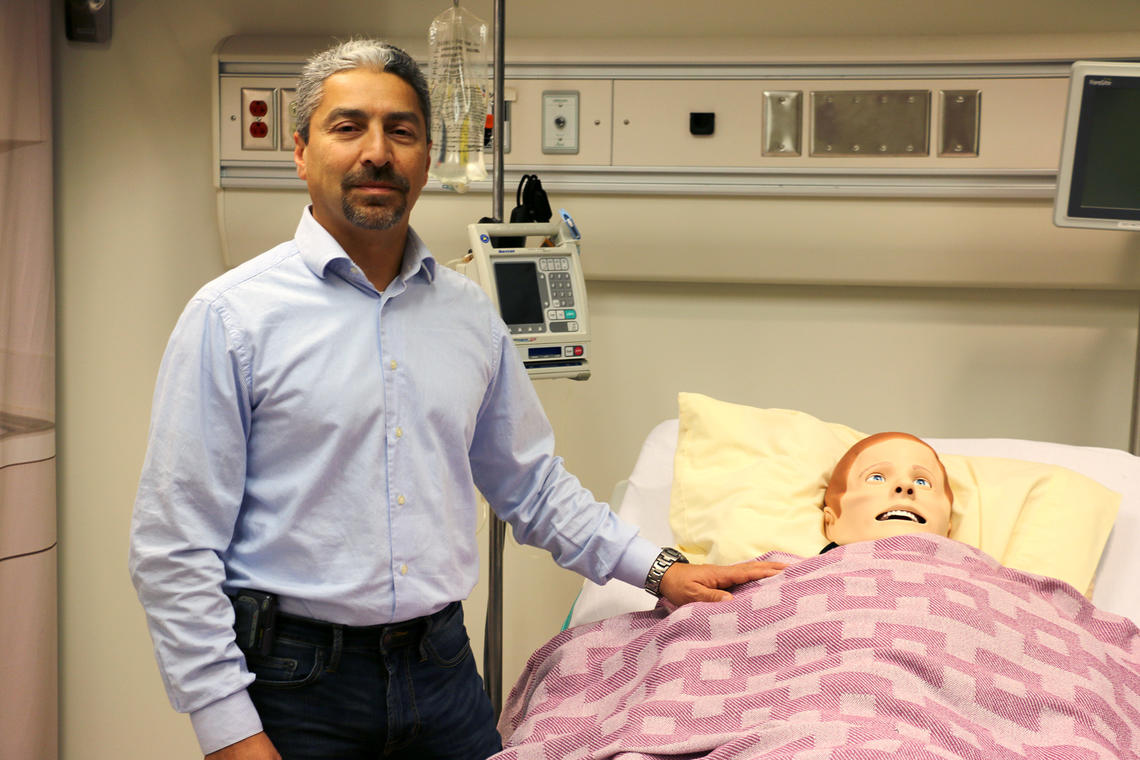Feb. 8, 2019
Championing simulation education in health research and practice
“For simulation as a teaching modality in health care, we’re talking about it having a predominant role in the last ten years.” With nine years of experience in the discipline, Dr. Ghazwan Altabbaa has been involved in simulation education since the early days of his career in medical education, during a time when simulation education began experiencing a resurgence. This is not a surprise, since Altabbaa is passionate about trying new things; whether it’s training for his first Spartan race, or implementing new methods of medical education.
Altabbaa became involved in simulation education and research through his master’s degree, which focused on diagnostic decision-making. After experiencing traditional teaching modalities such as lectures and rounds throughout his undergraduate and medical degrees, he found simulation to have a more lasting impact on his learning. This was one of the driving factors to his getting involved in simulation education.
He completed his MD in 1990 at the University of Damascus in Syria became certified in internal medicine in 1998, and completed research and clinical fellowships in nephrology at Wayne State University in Detroit, Michigan. He went on to achieve his Master of Science in clinical epidemiology in 2012 from the University of Calgary, which he completed through the Department of Community Health Sciences, with support from the O’Brien Institute for Public Health’s W21C Program in the Cumming School of Medicine.
For Altabbaa, simulation provides a unique space for learning and conversation, where mistakes can be made without human consequence of error. The combination of an experiential environment and facilitated reflection is what makes simulation education so effective. One of the most meaningful aspects of simulation education for Altabbaa is in his role as a facilitator, creating an environment that is comfortable, trusting and open. He finds great fulfilment watching the development of his learners, supporting their critical thinking and encouraging questions. In his mind, this exploratory learning is what allows simulation to have its lasting effect.

Dr. Altabbaa
“Students come and they practice a clinical scenario, they apply their knowledge and skills, we talk about it…and they end up changed by what they have learned. They are emotionally engaged; they’re going to remember it.”
Looking toward the next 10 years of simulation research and education, Altabbaa is passionate about using simulation in education for current clinical faculty as well.
“I would say that simulation education is even more important for clinical faculty, because they have been practicing and have formed certain ways of doing things over a longer period of time. Simulation would be more challenging, but also more inspirational for them.”
As his research and education portfolio has developed over the years, Altabbaa has structured his simulation work at the University of Calgary around three key pillars of interest: human performance, interprofessional education, and systems thinking. An example spanning all three of these topics is found in research he is conducting on optimal learning levels. He is interested to see where the optimal level of stress falls in student groups. How much is too much stress for retention and conversely how little is too little stress for engagement? This project exemplifies the need for simulation research says Altabbaa, since optimal stress level in a learning environment is difficult to practice in a live situation and he notes that the ramification of error is high with human patients. Simulation provides a way to practice and educate with in-depth learning results and low error.
In addition to his passion for simulation education and research, Altabbaa enjoys traveling, meditation, reading, and obstacle course racing.
TIDBITS:
Favorite quote: What you seek is seeking you. – Rumi
Currently reading: Spartan Up – Joe De Sena
Fun Fact: His hair is naturally dark gray with a white streak at the front. Most people think he has dyed it that way, but it is a naturally occurring phenomenon.
